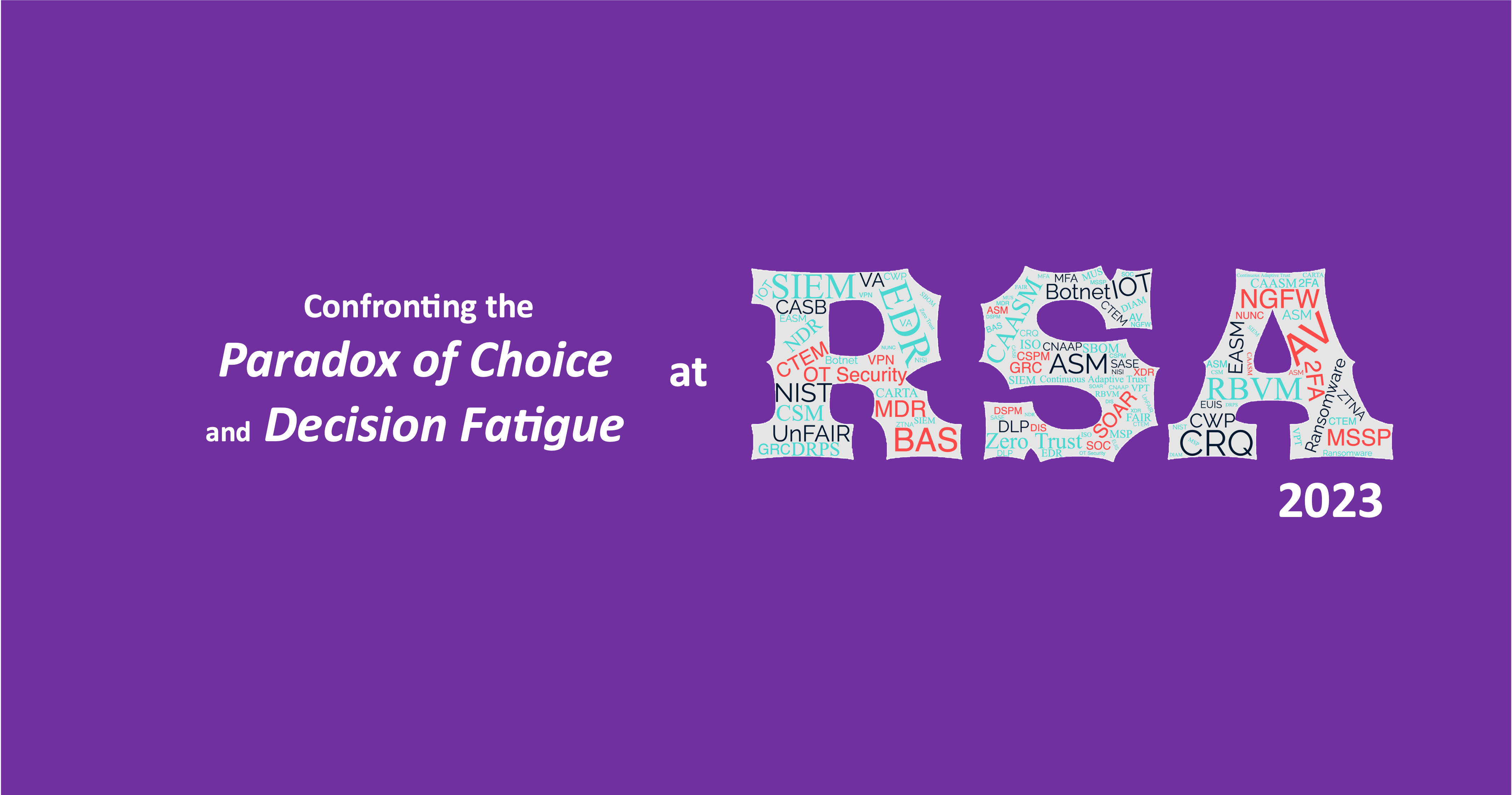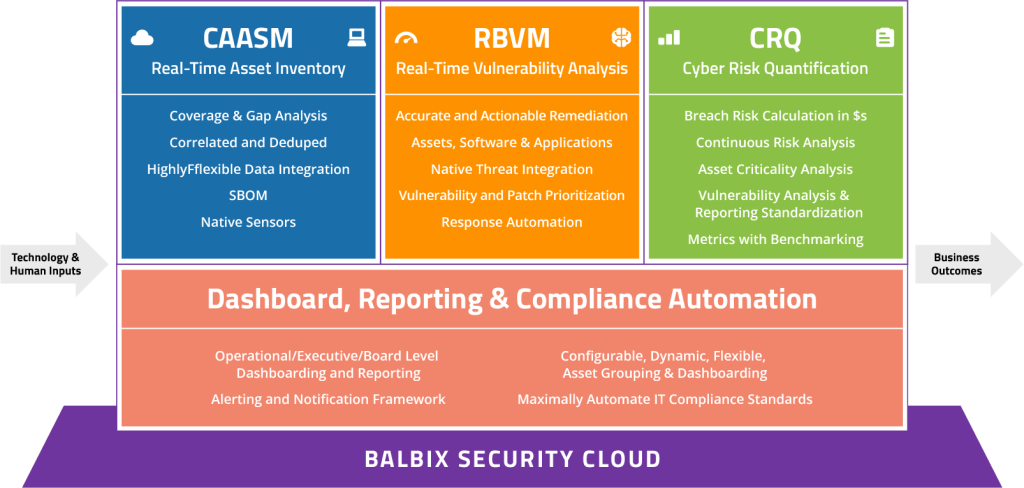

April 23, 2023
On the eve of RSA, you are probably looking forward to a few days of presentations, meetings, lunches, dinners, connecting with friends and colleagues, old and new. At this moment, you might find it useful to take a step back – several steps back actually, and introspect on the big picture facing cybersecurity leaders like yourself.
This blog is an open letter to CISOs and other cybersecurity leaders, written in collaboration with over a dozen of the industry’s top CISOs. These leaders work for Balbix customers ranging from the Fortune 25 to mid-sized enterprises. We thought reading this note might be useful for you to keep things in perspective, as you go about your RSA 2023 interactions.
Dear CISO,
As you are well aware, your mission in 2023 is riddled with unprecedented complexities and challenges that the cybersecurity world has never faced before. Amidst an uncertain economic climate, your CFOs are scrutinizing cybersecurity spending more rigorously than ever. Your already daunting job is further complicated by the need to do more with less. You are expected to identify efficiency and consolidation opportunities while demonstrating the ROI of investments.
In addition, new regulatory requirements from the SEC is adding another layer of complexity to your job. Some of us think we are going to get SOX-like governance rules in cybersecurity. Except this time, you are in the center of the SEC’s scope, not just your CFO and CEO.
In the last few months, we have all seen glimpses of how rapid advancements in Generative AI, i.e., ChatGPT and friends, is going to impact our future. How are we going to counter this onslaught?
The rapidly changing threat landscape, combined with budget cuts and regulatory challenges is hindering your ability to reduce cyber risk effectively. In the Fortune 100, it is not uncommon to have residual cyber risks totaling several hundreds of millions of dollars. For smaller organizations, these numbers are not that much smaller. Despite our tireless efforts, CISOs across the industry are struggling to meaningfully reduce cybersecurity risks.
We believe there are two primary reasons for this predicament: the paradox of choice and decision fatigue.
The cybersecurity market is flooded with products, solutions, and vendors, each promising to solve our security woes. While this variety may seem beneficial, it actually makes it harder for you to make the right choices for your organization.
In 2000, psychologists Sheena Iyengar and Mark Lepper published a groundbreaking study on the ‘paradox of choice’. They presented one group of supermarket shoppers with an assortment of twenty-four gourmet jams, while another group was shown only six. Interestingly, the larger assortment attracted more visitors, but shoppers were only 1/10th as likely to make a purchase compared to those presented with fewer options. This counterintuitive phenomenon, known as the ‘paradox of choice,’ demonstrates that excessive choice not only leads to decision paralysis but also reduced satisfaction for those who do choose.
The same thing has happened to our industry. The cybersecurity market is flooded with products, solutions, and vendors, each promising to solve your security woes. For example, consider the sheer number of endpoint protection solutions available today, each with its unique features and advantages. While this variety may seem beneficial, it can actually make it harder for you to make the right choices for their organizations.
Similarly, think about the numerous security frameworks that exist, such as NIST, ISO, and CIS. Deciding which framework to adopt and how to tailor it to your organization’s needs can be overwhelming, further contributing to the paradox of choice.
With so many options, it’s challenging for CISOs to identify the most effective tools and strategies. This fragmentation can lead to poor decision-making a suboptimal security posture and wasted funds.
As if the paradox of choice wasn’t enough, you also face decision fatigue. With so many aspects of security to consider, it’s tough to prioritize what deserves our attention and resources. Imagine the captain of a ship, and you have to navigate through a storm while simultaneously managing the crew, cargo, and passengers. Your attention is divided, and each decision you make has consequences. This can lead to exhaustion and, ultimately, suboptimal choices.
CISOs face a similar challenge. They must determine how to effectively allocate shrinking budgets, ways to drive down the cyber risks, how to respond to regulatory requirements, decide security frameworks to adopt, assess the severity of various threat vectors, decide between investing in employee training or acquiring new security tools, prioritize incident response efforts, evaluate the benefits of implementing zero-trust architectures, and balance compliance requirements with proactive defense measures. This constant barrage of decisions takes a toll, and as a result, we may fail to reduce cyber risk effectively.
So, how can you tackle these challenges and enhance your organizations’ security posture? At Balbix, in our work with Fortune 500 customers, we gained a ringside view of CISOs grappling with these issues. We have also seen CISOs adopt a few organizing principles, and then see dramatic progress in cyber risk reduction.
Here are five principles that we recommend you consider adopting:
We designed Balbix for the challenges of 2023. Balbix uses AI and automation to help you reduce breach risk. Balbix uses the same unified asset and risk model to provide your organization automate cybersecurity posture management. Balbix capabilities include Cyber Asset Attack Surface Management (CAASM), Advanced Risk-Based Vulnerability Management (RBVM) and Cyber Risk Quantification (CRQ) integrated into a single platform.
With Balbix, you can say goodbye to siloed tools, subjective decision-making, and tedious manual workflows. Balbix empowers you to continuously assess your enterprise’s cybersecurity posture and prioritize open vulnerabilities based on business risk. This enables you to mitigate cyber risk quickly and effectively, giving you peace of mind and freeing up valuable time for your security team to focus on more strategic initiatives. Balbix helps you maximally automate every phase of your vulnerability management process.

With Balbix, you can also answer thousands of questions that come up as your security and risk management colleagues go about their daily work. Balbix’s search allows you to define a query using the vocabulary of cybersecurity, IT, business tags/names, and cyber risk. These queries define dynamic groups which can then be dashboarded, assigned to owners, used for reporting and triggering workflows.
In 2023, these capabilities will provide you with crucial opportunities for overcoming the paradox of choice and decision fatigue while saving money and increasing productivity. You can learn more by visiting us at balbix.com.
Good luck, and have a great RSA!